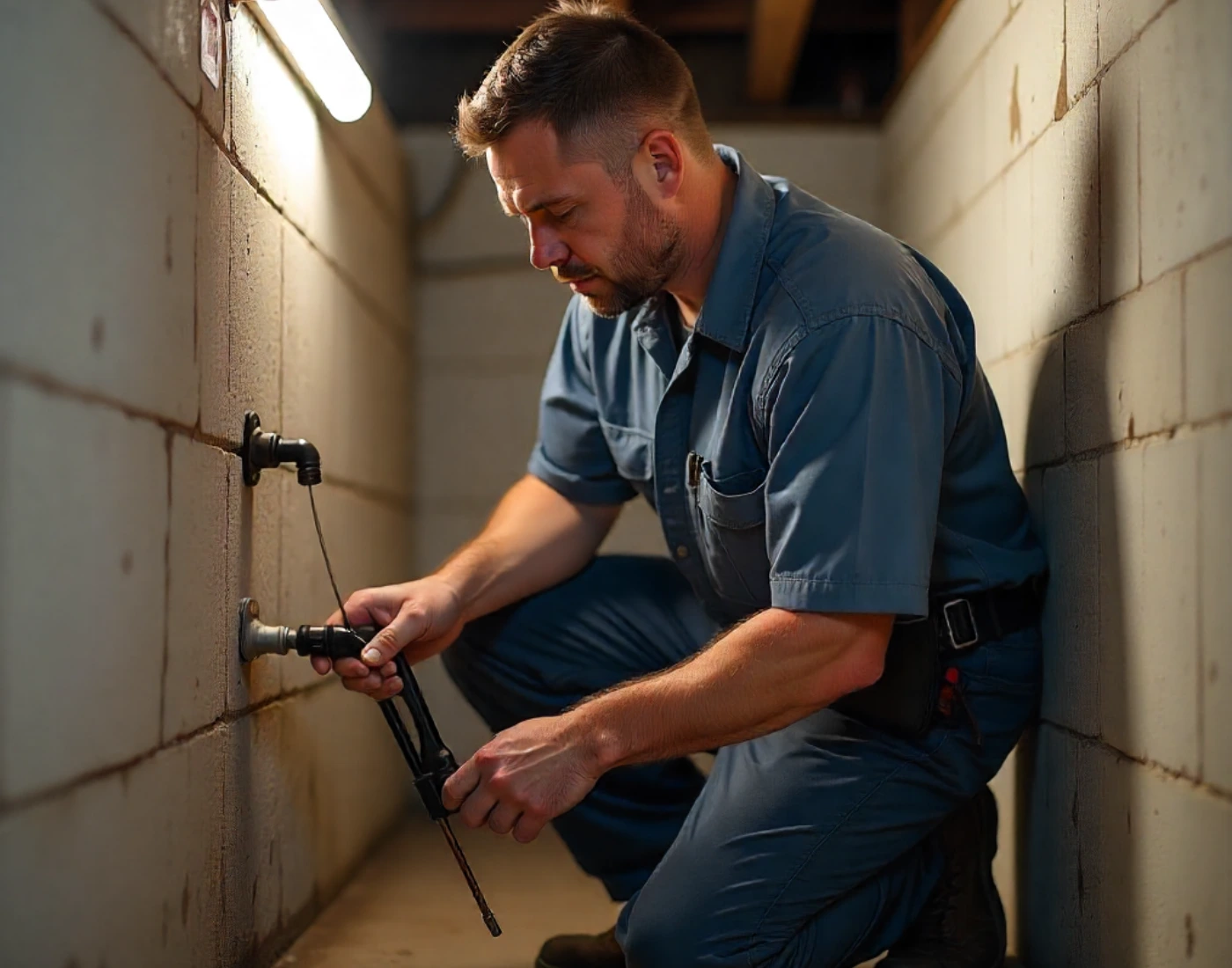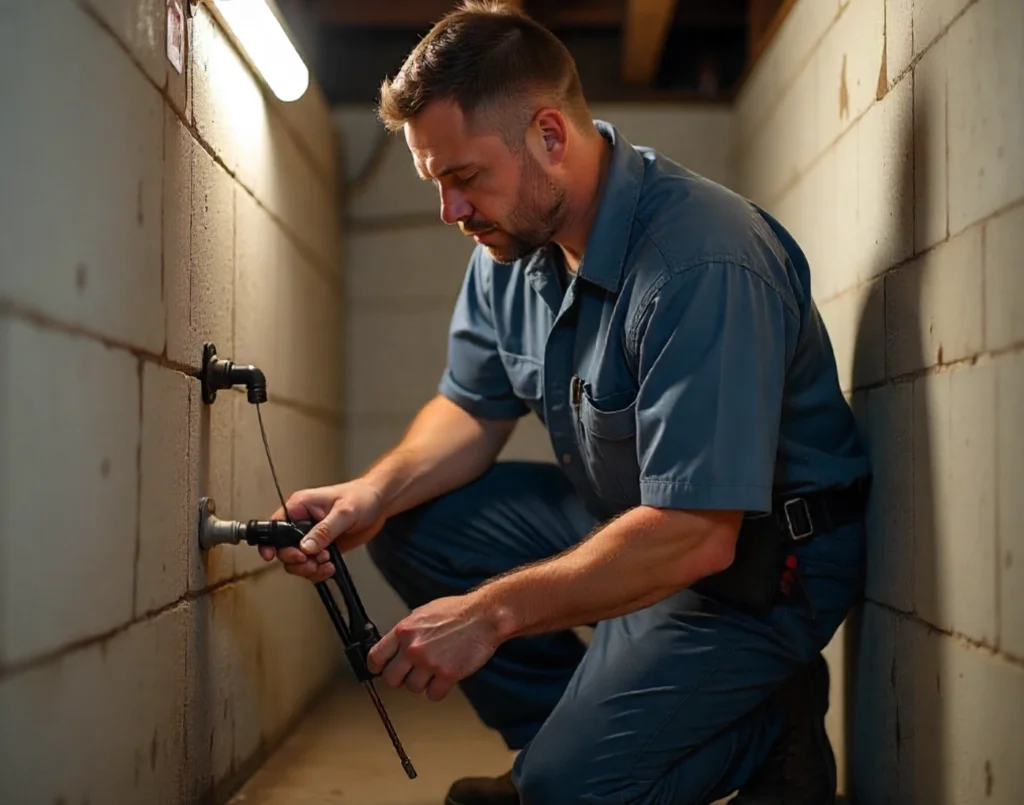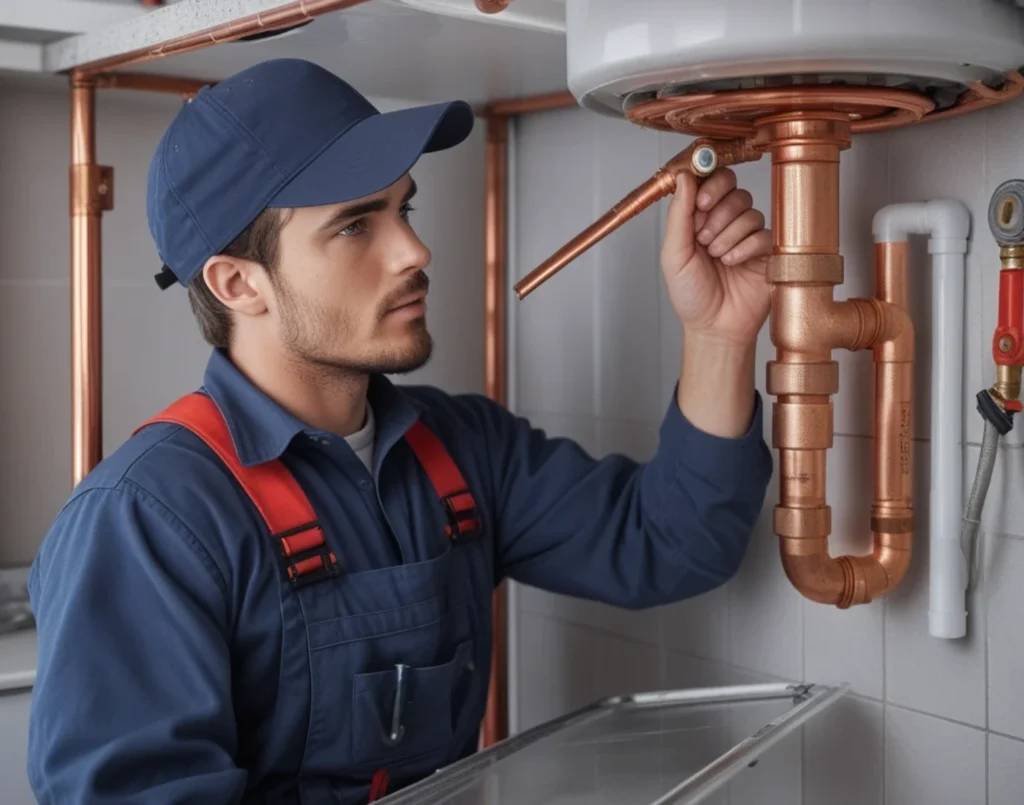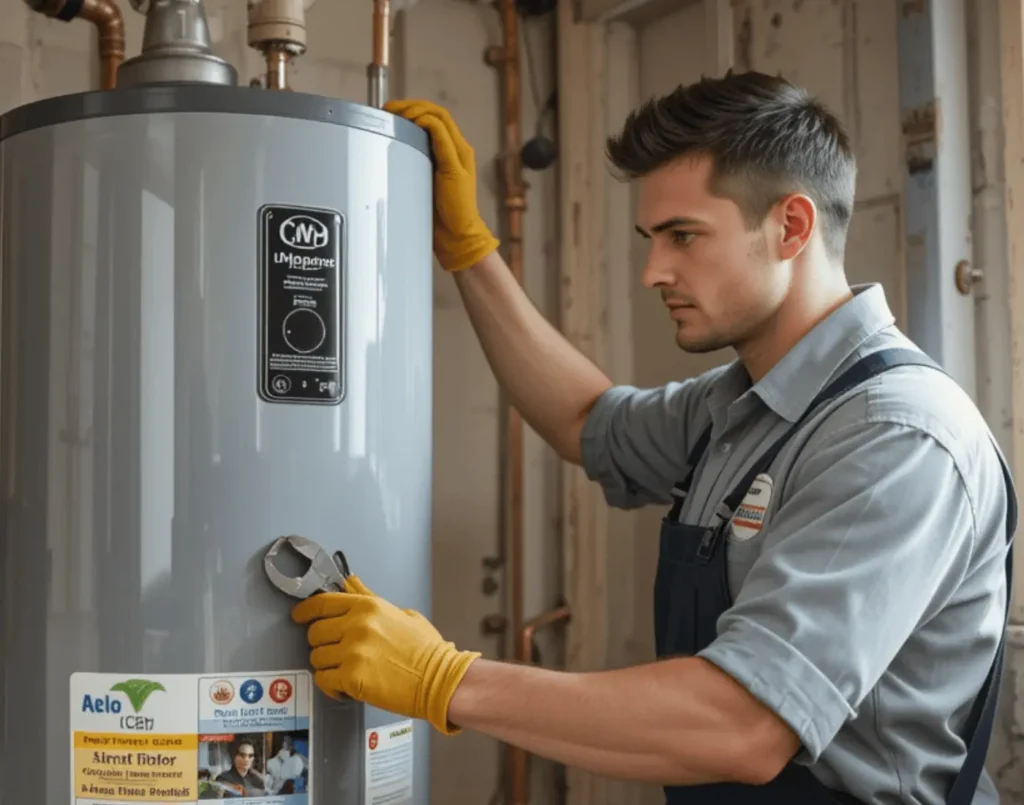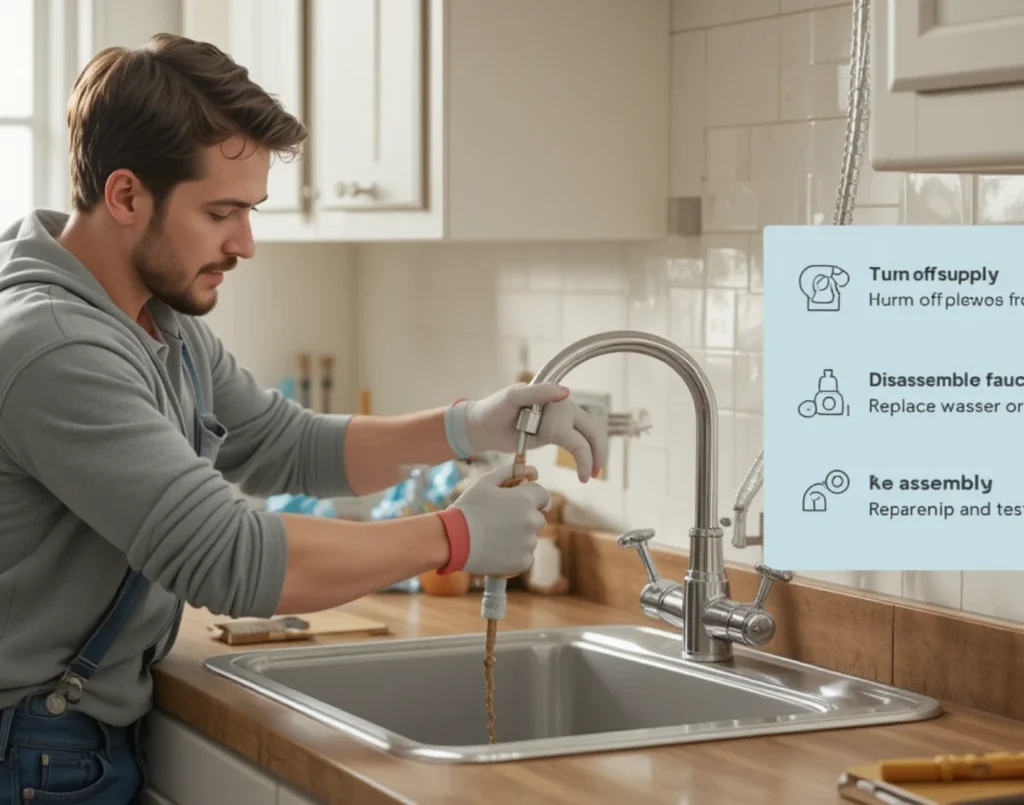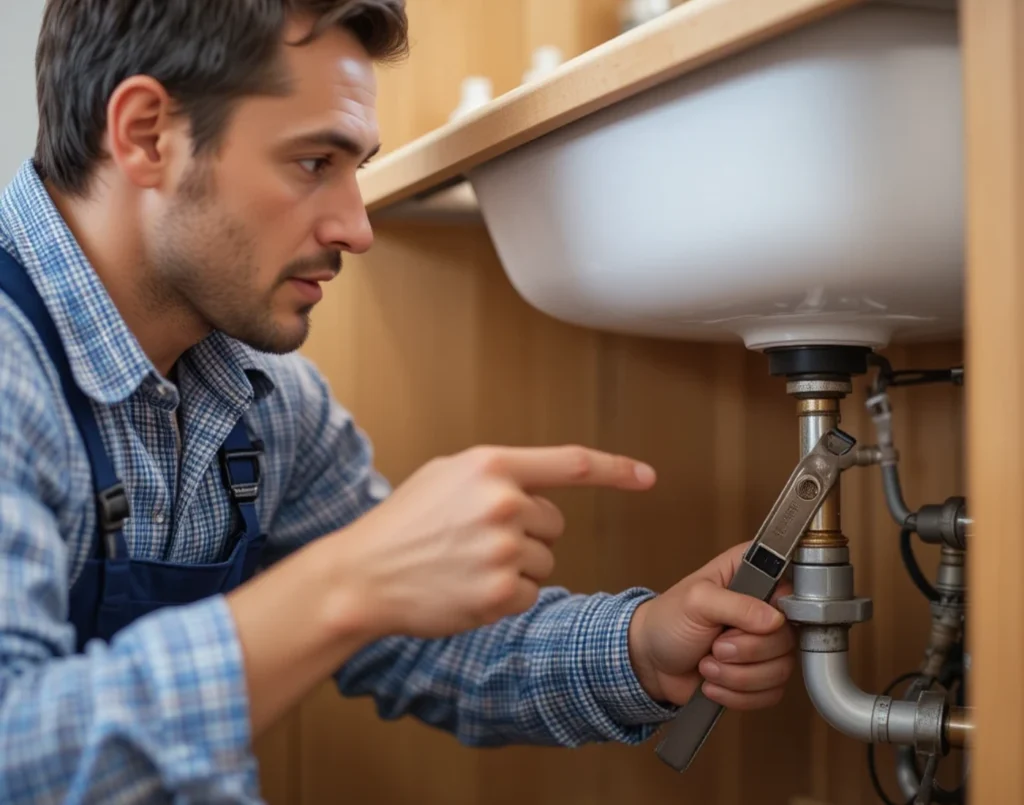The Plumbing Maintenance Checklist Every Homeowner Should Follow is a must-have guide. It helps you keep your home’s plumbing in great shape. Regular maintenance can prevent costly repairs and ensure that your plumbing works efficiently. This checklist helps you avoid common plumbing problems. It covers everything from checking for leaks to cleaning drains. Follow these easy plumbing tips. They help your system last longer and prevent sudden plumbing problems. Whether you’re in a busy city or a suburban area, proper plumbing care is crucial for every homeowner.
The plumbing maintenance checklist helps homeowners care for their plumbing systems. You’ll learn easy DIY tasks, like checking for problems and cleaning drains. You’ll also know when to call in professionals for tougher issues. Regular maintenance stops expensive emergencies. It also helps your system have a longer lifespan and maintain a steady flow of water in your home. Use seasonal tips and make a maintenance schedule
Understanding Plumbing Systems
Your house has two main plumbing parts:
- The water supply system, which delivers clean water to your home, is essential.
- The drainage system removes wastewater safely.
- Water is forced through pipes by pressure in the water supply system. This water reaches faucets, showers, toilets, and other fixtures.
- The drainage system uses gravity and venting to move wastewater away from your home. This prevents backups.
- Most homes use copper, PVC, or PEX pipes in their plumbing networks.
Each pipe material has its own
Learning the basics of your Plumbing Maintenance Checklist helps you identify issues early. This enables clear communication with plumbers or technicians when repairs are necessary, saving you both time and money in the long run.
What DIY plumbing tasks can you handle?
Visual Leak Inspections
Check all visible pipes, fixtures, and connections in your home once a month. Look for any signs of moisture or water damage. Check for any indications of water damage or moisture. Even small drips can indicate developing problems that worsen over time.
Simple Water Pressure Checks
As part of your Plumbing Maintenance Checklist, check the water pressure at various fixtures around your home. This is essential for identifying potential obstructions or issues within your plumbing system. Turn on each faucet one by one, and carefully observe any significant differences in flow rate or pressure. If low pressure is noticed at a single fixture, it could indicate a localised issue. However, if multiple fixtures show low pressure, it’s a sign of a larger system problem that may require professional assistance to resolve.
Faucet and Toilet Inspections
- Check faucet aerators for mineral buildup and clean them regularly.
- Test toilet handles and flush mechanisms for proper operation.
- Inspect toilet tanks for running water or unusual sounds.
- Look for loose connections or worn seals around fixtures.
- Check that all handles and controls operate without any issues.
Routine Drain Cleaning
- Remove visible debris from drain covers and strainers weekly.
- Flush drains with hot water to help dissolve soap buildup and minor clogs.
Skip chemical drain cleaners for regular maintenance. They can harm pipes over time. Use enzymatic cleaners monthly to break down organic matter through natural processes.
Pipe Insulation Examination
As part of your Plumbing Maintenance Checklist, be sure to inspect pipe insulation in unheated areas such as basements, crawl spaces, and attics. Replace any damaged or missing insulation before cold weather sets in. Properly insulated pipes are crucial to prevent freezing and can help reduce energy costs by maintaining a consistent water temperature. Regularly checking insulation is an easy but essential step in your overall plumbing maintenance routine.
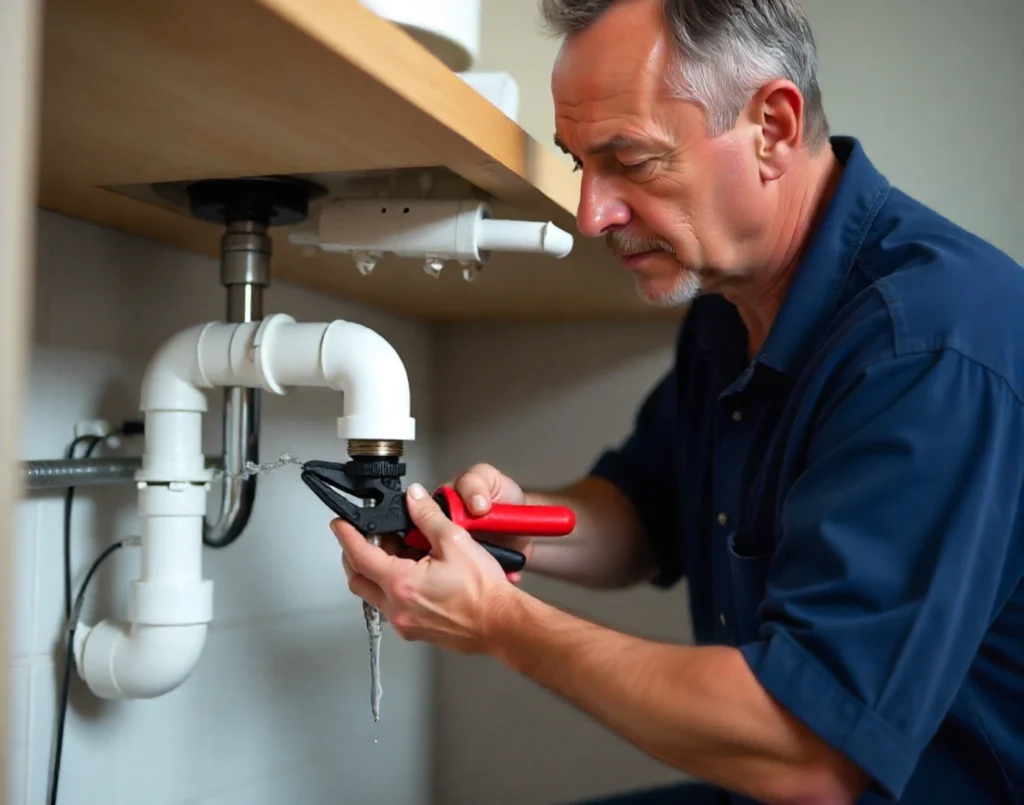
When should you call professional plumbers?
Comprehensive Leak Detection
Professional plumbers use specialised equipment to locate hidden leaks behind walls or underground. They can run pressure tests and use acoustic detection tools. These tools spot issues that homeowners can’t see. If you see higher water bills or signs of water damage with no clear cause, call a pro for leak detection. It can save you money over time.
System-wide Water Pressure Assessment
If many fixtures have pressure problems, professionals can check your whole system. They have tools to measure exact pressure levels and identify solutions.
Professional-grade drain cleaning
- Hydro-jetting removes stubborn blockages and buildup.
- Camera inspections reveal pipe conditions and problem locations.
- Root removal services address tree intrusion issues.
- We can complete pipe repairs at the same time as cleaning.
- Preventive treatments extend the time between service calls.
Water Heater Inspection and Servicing
As part of your Plumbing Maintenance Checklist, a professional should inspect and maintain your water heater annually. This includes removing sediment, checking safety valves, and inspecting both electrical and gas connections. Testing the heater’s performance ensures it operates efficiently. These regular maintenance services help your water heater last longer, prevent potential flooding, and reduce the risk of safety hazards in your home.
Tools and materials needed for maintenance
Start with the essentials:
- Keep a plunger for toilet and sink clogs
- A flashlight helps you inspect dark or hard-to-reach areas
- An adjustable wrench is useful for tightening or loosening plumbing fittings
- Pipe insulation prevents freezing in colder months
- Plumber’s tape (Teflon tape) helps seal threaded connections
- Enzymatic drain cleaner keeps pipes clear without harsh chemicals
Benefits of Regular Plumbing Maintenance
Following a Plumbing Maintenance Checklist helps prevent up to 90% of common plumbing problems and significantly extends the lifespan of your plumbing system. Homeowners who adhere to regular maintenance schedules can save up to 75% on emergency repairs, making it far more cost-effective than waiting for issues to arise.
Maintenance does more than save money. It keeps water pressure steady. It also prevents damage to your home. Plus, it ensures your family has clean water. Good plumbing systems boost your property’s value and give you peace of mind.
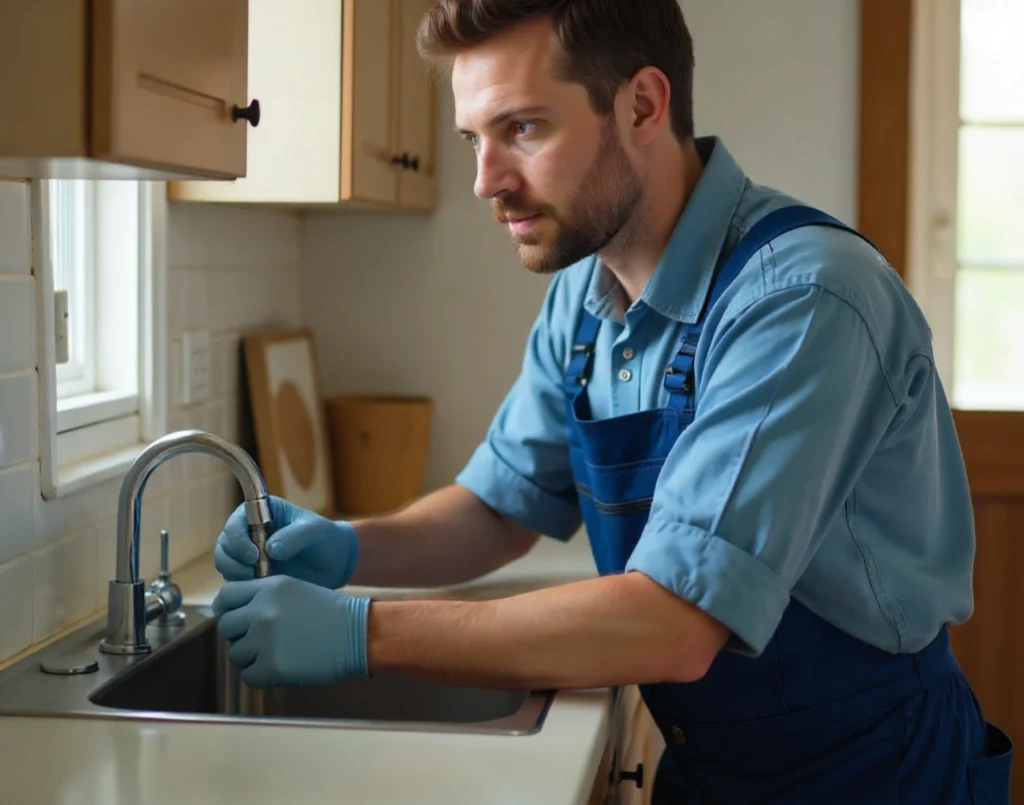
How do you handle common plumbing problems?
Start with the basics:
- Use hot water flushes regularly to help clear mild buildup
- Try plunging first before turning to chemical or mechanical methods
- Take off drain covers and pull out hair or debris by hand using gloves or a small tool
- This simple step can resolve many slow-drain issues
How to Fix Leaky Faucets: Step by Step
As part of your Plumbing Maintenance Checklist, always shut off the water supply before beginning any repairs. Take pictures as you disassemble parts; this will help guide you during reassembly. When repairing faucets, replace all seals and washers, even if only one appears worn. This simple step prevents repeat repairs and ensures longer-lasting, efficient fixes.
How to Stop Running Toilets and Save Water
- Check to see if the flapper properly seals the flush valve seat.
- Adjust the chain length if the flapper doesn’t close completely.
Running toilets waste hundreds of gallons daily. They also raise water bills significantly. Most fixes involve simple adjustments or inexpensive part replacements.
Low water pressure
Clean faucet aerators and showerheads regularly to remove mineral deposits that restrict flow. Soak fixtures in vinegar overnight. This helps dissolve stubborn buildup, especially in areas with hard water. Check if pressure issues affect only hot water. This suggests water heater problems, not supply issues.
What seasonal maintenance should you perform?
Spring and summer
Inspect outdoor spigots and irrigation systems after winter freezes end. Check for cracked pipes or loose connections that developed during cold weather. Prior to the start of seasons with high usage, test all outdoor water sources.
Clean gutters and downspouts. This stops water backup. Water backup can harm foundation drainage and basement plumbing systems.
Fall and winter
- Shut off and drain outdoor water lines before freezing temperatures arrive.
- Insulate exposed pipes in unheated areas, such as garages and crawl spaces.
- Set thermostats to maintain the lowest temperatures that prevent pipe freezing.
- Be aware of where your primary water shut-off valve is located in case of an emergency.
- Keep cabinet doors open to circulate warm air around the pipes during extreme cold.
Creating a plumbing maintenance schedule
An easy calendar system keeps you organised. It helps you track important household and plumbing tasks. Set monthly reminders for tasks like paying bills, doctor visits, and cleaning drains. Include visual plumbing inspections to catch minor issues before they become costly. Next, plan seasonal tasks. These include spring cleaning, fall yard work, and winter preparations. For winter, insulate any exposed pipes. Finally, mark annual events like tax filing deadlines, birthdays, and yearly plumbing inspections. Break tasks into monthly, seasonal, and yearly categories. You can avoid last-minute stress. This way, you make sure nothing important is missed.
Pro Tips / Safety Advice
- Always shut off the water supply before repairs
- Locate and familiarise yourself with individual fixture shutoff valves
- Know where your home’s main water valve is located
- Keep these valves clear and easily accessible for emergencies
- Even minor drips can quickly lead to major water damage and costly repairs
- Address leaks promptly before they worsen
- Place detectors near water heaters, washing machines, and other vulnerable areas
- These devices alert you early to leaks, especially useful when you’re away from home
Final Thoughts / Encouragement
Plumbing maintenance is simple. You don’t need expert skills or costly tools. Just pay attention and provide basic care regularly. Begin with basic visual checks. Then, gain confidence by doing small tasks, like cleaning drains and checking connections.
Take pride in caring for your home’s plumbing system. By using this checklist regularly, you can enjoy dependable water service. It will help you avoid many plumbing emergencies that stress homeowners.
Frequently Asked Questions:
1. What is plumbing maintenance?
Plumbing maintenance involves regular inspections and upkeep of your plumbing system to prevent leaks, clogs, and other issues. This includes tasks like checking for leaks, cleaning drains, and inspecting pipes for corrosion or damage to ensure optimal functionality.
2. What is a maintenance plumber?
A maintenance plumber specialises in the routine care and inspection of plumbing systems. They perform tasks such as cleaning pipes, checking water pressure, fixing small leaks, and making sure plumbing systems are in good working order to avoid major repairs.
3. What is a maintenance checklist?
A maintenance checklist is a list of tasks or actions that need to be performed regularly to ensure the proper functioning of your plumbing system. It includes inspections, preventive measures, and repairs that should be done to prevent major plumbing issues.
4. What are the steps in the plumbing process?
The main steps in the plumbing process include planning (designing the layout), installation (setting up pipes and fixtures), and maintenance (ensuring the system operates properly through inspections and repairs). Regular maintenance is key to extending the life of your plumbing system.
5. How to regularly clean pipes?
To clean pipes regularly, flush them with hot water to clear out grease and soap buildup. Use baking soda and vinegar for a natural cleaning method, or use enzymatic drain cleaners to break down organic matter. Perform this maintenance once a month to prevent clogs and keep water flowing smoothly.

